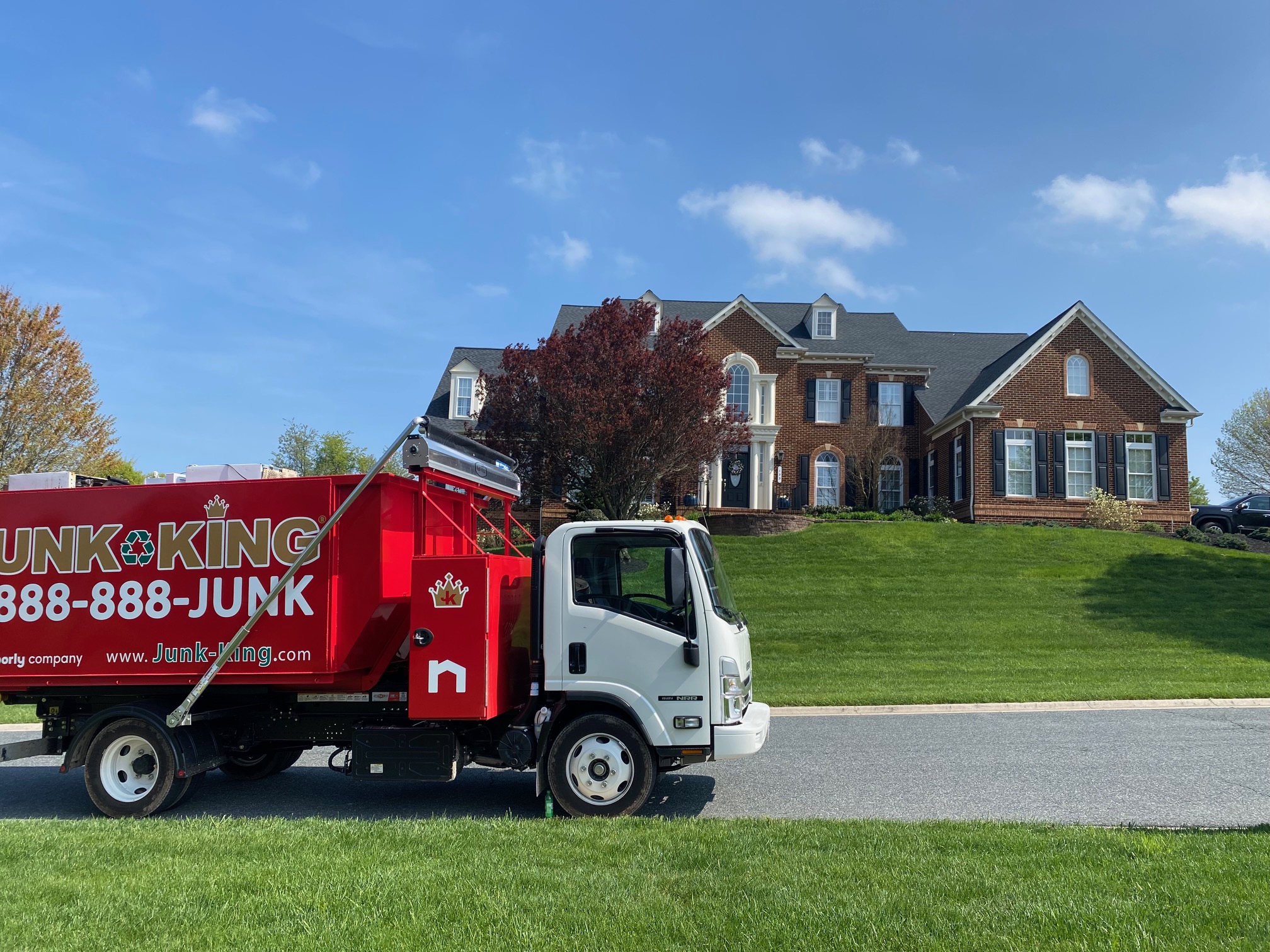When we gear up for a junk removal appointment, it’s essential to start with a systematic approach. We’ll first assess and prioritize what truly needs to go, ensuring we focus on items that no longer serve us. By organizing and categorizing our belongings, we can make the process seamless and efficient. With careful planning, we can even identify opportunities for donation or recycling. There’s much more to explore in this preparation journey.
Assess Your Items for Removal
Where should we begin when evaluating our items for removal?
Let’s start by systematically examining each piece’s condition. We should ask ourselves: Is the item damaged, outdated, or in a state of disrepair? If an item is barely functional or unsightly, it might be time to let it go.
Next, consider sentimental value. Does the item hold any emotional significance for us? If it does, we need to weigh its importance against the practicality of keeping it. Sometimes, we can preserve memories with a photograph rather than the physical object itself.
As we go through this process, creating a list or a simple spreadsheet can help us keep track of our decisions and guarantee we’re making thoughtful choices about what stays and what goes.
Prioritize What Needs to Go
After evaluating the condition and sentimental value of our items, it’s time to focus on what needs to be removed first.
Let’s start by creating two categories: sentimental and functional. We should prioritize sentimental items by considering their emotional value and deciding if they truly enrich our lives. For those we’re ready to part with, set them aside for removal.
Next, prioritize functional items. Consider whether they serve a practical purpose or are just taking up space. If they’re outdated or broken, add them to the removal list.
Our goal is to streamline this process, ensuring we don’t hold onto things that don’t serve us anymore. By systematically prioritizing, we make the upcoming junk removal appointment more efficient and organized.
Determine the Scope of the Job
Let’s start by evaluating the items we need to remove and categorizing them based on how they’ll be disposed of, such as recycling, donation, or trash.
This systematic approach helps us understand what we’re dealing with and guarantees nothing is overlooked.
Once categorized, we can estimate how long the job will take, allowing us to plan our time efficiently.
Assess Items for Removal
How do we begin the process of evaluating items for removal?
First, let’s systematically assess each item’s condition and sentimental value. This guarantees we’re making informed and efficient decisions. By doing so, we can prioritize what stays and what goes.
Here’s a practical approach:
- Inspect Item Condition: Evaluate wear and tear. Is it usable or beyond repair?
- Consider Sentimental Value: Does it hold personal significance? Some items are irreplaceable.
- Assess Functionality: Is it still functional and needed in our daily lives?
- Space Utilization: Does its size justify the space it occupies?
Categorize by Disposal Type
With a clear understanding of which items to keep or let go, our next step involves organizing everything by disposal type.
We should start by sorting items into categories such as furniture disposal, electronic waste, recyclables, and general trash. This systematic approach guarantees that nothing gets overlooked.
For furniture disposal, let’s identify pieces that can be donated or need special handling.
Electronic waste requires particular attention due to environmental regulations; we’ll gather gadgets, appliances, and batteries separately for safe disposal.
Recyclable items like paper, plastics, and metals should be grouped accordingly.
By categorizing items in this manner, we streamline the junk removal process, making it more efficient and environmentally friendly.
Let’s make sure everything is ready for a smooth, hassle-free appointment.
Estimate Job Duration
To accurately estimate the job duration for our junk removal project, we first need to determine the scope of the task at hand.
This will help us with time estimation and effective job scheduling.
Let’s break it down systematically:
- Inventory Assessment: Count and categorize each item to understand the volume.
- Space Analysis: Evaluate the size and layout of the area to gauge accessibility.
- Special Requirements: Identify items needing special handling or disposal methods.
- Labor Needs: Decide the number of team members required for efficiency.
Organize and Sort Your Junk
Before we plunge into the actual removal process, let’s tackle the essential step of organizing and sorting your junk. Implementing decluttering techniques helps streamline the task.
First, gather all items in one space. This provides a clear view of what we’re dealing with. Next, employ effective sorting strategies. Create three distinct piles: keep, donate, and dispose.
Be decisive; avoid the temptation to hold onto unnecessary items. Use clear labeling for boxes or bags to prevent mix-ups later. Consider the utility and sentimental value as you sort.
A systematic approach not only speeds up the removal but also guarantees we’re not tossing out anything valuable inadvertently. By the end, our space will be ready for the final removal stage.
Identify Hazardous Materials
Some items in our junk pile might seem innocuous at first glance, but they could pose significant risks if not handled correctly.
Identifying hazardous waste is essential to guarantee our safety and that of the removal team. Let’s be vigilant and take necessary safety precautions.
Here are some common hazardous materials we might encounter:
- Paints and Solvents: Properly sealed and stored away from children and pets.
- Batteries: Separate them from other items due to their corrosive nature.
- Cleaning Supplies: Keep them in original containers to avoid mixing chemicals.
- Electronic Waste: Old devices often contain toxic components.
Clear Access Paths
One essential step in preparing for junk removal is guaranteeing clear access paths for the removal team.
Let’s start by evaluating the main entry and exit routes they’ll use. We should remove obstacles like furniture, loose rugs, or toys that might be in the way. Clearing pathways is vital not only for efficiency but also for guaranteeing safety.
We can prevent trips and falls by checking for uneven surfaces or clutter that might hinder movement. If any doors or gates need to be opened or unlatched, let’s make sure they’re accessible.
It’s practical to take into account weather conditions too; clearing snow or debris from outdoor paths might be necessary.
Communicate Special Instructions
Clear communication is key when we need to convey special instructions to the junk removal team. By ensuring they understand our requirements, we can avoid misunderstandings and streamline the process.
Let’s organize our special requests beforehand and provide clear instructions:
- Identify Fragile Items: Let the team know about any delicate items needing extra care.
- Prioritize Specific Areas: Specify which areas or items should be addressed first.
- Access Details: Inform them of any special access points or restrictions.
- Hazardous Materials: Clearly mention any hazardous materials needing special handling.
Preparing a detailed list helps the removal team anticipate our needs and execute efficiently.
Prepare Payment and Necessary Documents
Once we’ve communicated our special instructions to the junk removal team, it’s important to organize payment and necessary documents to guarantee a seamless process.
Let’s first verify the accepted payment methods. Typically, services accept credit cards, checks, or cash, but confirming beforehand can prevent surprises.
Next, consider any document requirements. We might need to provide proof of identity, especially if local regulations require confirmation of ownership for disposal.
Check if the company requires a signed waiver or contract, making sure all legalities are clear. We should prepare these documents in advance, so they’re ready when the team arrives.
Consider Donation or Recycling Options
When decluttering, it’s worth considering the environmental impact of junk removal by exploring donation or recycling options.
We can make a difference by redirecting usable items to those in need or guaranteeing materials are returned to the production cycle. Here’s how to start:
- Research local donation centers: Identify organizations that accept furniture, clothing, and electronics.
- Visit recycling facilities: Some items, like batteries and electronics, require special handling. Learn where to take them.
- Sort items systematically: Separate items into categories—donate, recycle, dispose. This avoids mixing and guarantees efficient processing.
- Check for pick-up services: Some centers offer to collect items, saving us time and effort.
Frequently Asked Questions
How Long Does a Typical Junk Removal Appointment Take?
Our typical appointment duration ranges from 30 minutes to a few hours. It depends on removal efficiency, which factors in the amount of junk and accessibility. Let’s guarantee a smooth process by organizing items before our team arrives.
Is It Necessary to Be Present During the Entire Removal Process?
We should consider presence requirements for the entire removal process. While appointment flexibility might allow brief absences, being present guarantees everything is removed correctly and addresses any issues immediately, making the process smoother and more efficient.
What Happens if the Weather Is Bad on the Appointment Day?
If it’s rainy, we should check the company’s policy on bad weather. Many offer appointment rescheduling to guarantee safety and efficiency. Let’s contact them early to avoid any surprises and guarantee the process goes smoothly.
Are There Any Items That Junk Removal Services Won’t Accept?
We should check if the junk removal service accepts our items. They typically won’t take hazardous materials or large appliances. Let’s list everything and confirm with them before the appointment to guarantee a smooth process.
Can I Add More Items on the Day of Removal?
Yes, we can handle last minute additions, but let’s check with the service about item limitations first. It’s practical to guarantee they can accommodate extra items without disrupting their schedule or exceeding their capacity.


